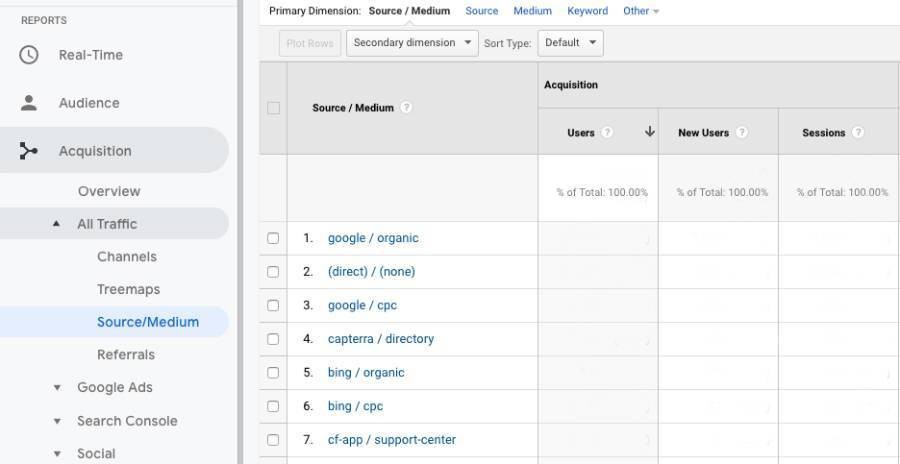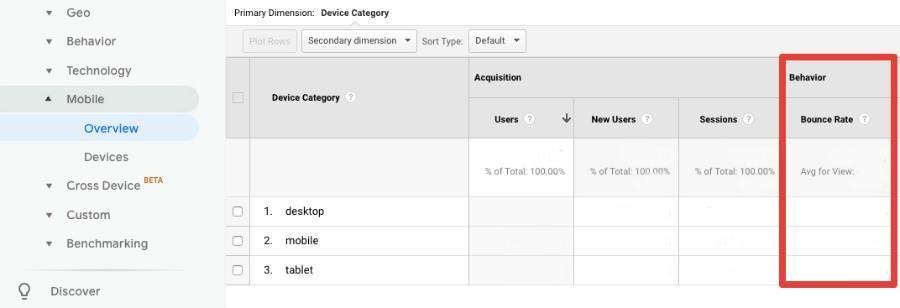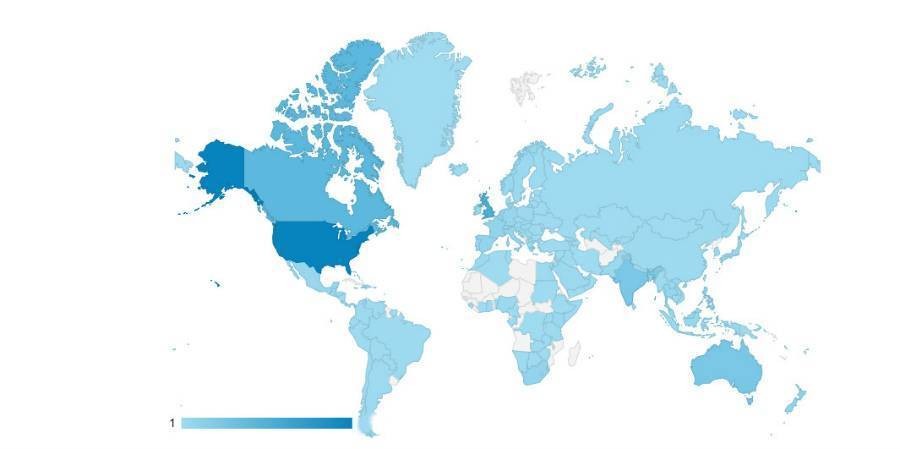Having an optimized website can help you attract more travelers who search, plan and book online. But if you’re not using Google Analytics alongside it, you might not know how to run your site in the best way for your tour business.
Think of your tour website as a digital lobby — online visitors carry out the same actions as someone who walks through your front door. They find you through a referral. Some browse for more information, while others ask related questions. And finally, they make a booking if inspired.
Unlike a walk-in guest, however, you can’t see the behaviour of an online visitor firsthand. In fact, they may have various interactions before checkout, and you’d be none the wiser as to what led them to book, or what turned them away. That is unless you’re using Google Analytics.
As a free online tool, Google Analytics can help you track and analyze website traffic. With it, you get access to reports ranging from behaviour flow to audience location. So instead of being in the dark when it comes to online bookings, you can witness how, or if, visitors convert, while also getting a better understanding of your target audience.
The benefits of Google Analytics are plenty — depending on how you use the platform. So to get you started, we’ll break down some insightful metrics that you can use going forward, whether as a daily booking report or for your year end reports.
8 ways to start using Google Analytics
1. Discover how visitors find your website
There are many online paths someone can take that’ll lead them to your tour website. Maybe they see your local listing on Google when searching for things to do in the area. Or perhaps you catch their attention with a hashtag-sprinkled Instagram post.

By looking at the Source/Medium under Acquisition and All Traffic, you can identify trends in your website traffic and figure out where to focus your marketing efforts. For example, if you see lots of visitors come from Youtube, then you can distribute more content there, and even test to see whether video is also useful on other platforms — like Facebook.
2. Learn which keywords to use
Google is a popular place for travelers to discover tours and activities — either in-destination or before the departure date. That means it’s best to show up on the first page of the search results to ensure they discover you right away. But how do you make that happen?
Though search engine optimization (SEO) continually evolves, peppering your website with relevant keywords still tells Google what your site is all about. And to know what keywords those should be, you can refer to Google Analytics.

In the Search Console, you’ll see a list of Queries people use to find your website, and how you rank for each one. While you may rank high for certain terms, the important metric to take note of is the click-through rate. Google Analytics calculates this metric by dividing the number of clicks a link has in the search results by the number of times someone saw it.
So if you have a low click-through rate (CTR) for search queries, it could be because your content isn’t what the searcher is looking for and you may need to reconsider what keywords to use instead.
3. Find out if you make a good impression
Just because someone lands on a page, it doesn’t mean they’ll stay for a while. There are all sorts of reasons a visitor may leave — like intrusive advertisements, slow page load time, and unresponsive design. This immediate exit is known as the bounce rate, which is the percentage of visitors who view one page without taking further action.
You can quickly find out the bounce rate of all your pages in Google Analytics under Acquisition and Overview. Generally, a healthy bounce rate is less than 70%. If it’s any higher than that on a per page basis, then you may need to evaluate what’s turning visitors away.
4. Uncover whether to be mobile-first
Still not convinced a mobile-friendly booking experience is of paramount importance nowadays? Mobile Overview in Google Analytics might show you otherwise because, with it, you’ll see how many of your visitors use a desktop, mobile or tablet.

If you note that many view your website with a smartphone, then check what the bounce rate is as well. Why? Because a high bounce rate for mobile users often implies your website isn’t mobile-first — or even mobile-friendly. And it’d be a wasted opportunity to get significant mobile traffic only to lose it right away.
5. Determine the best social media strategy
There are so many social media channels today that you might feel obligated to create an account for every single one. However, this isn’t the best idea as it can hurt more than it can help. That’s because the key to a successful social media campaign is reaching the right audience while maintaining quality content. And it’s challenging to do that when you spread yourself too thin.
So by looking at Social Network Referrals under Acquisition in Google Analytics, you’ll see what channels drive the most website traffic, and determine where to focus your social media efforts
6. See where visitors are located
With Checkfront’s interactive Customer Map, you can find out where the majority of your guests live. Likewise, Google Analytics comes with a map — located under Geo and Location —but it tells you where most of your visitors come from instead. By using both, you can get a clear picture of your target audience, and then plan your marketing campaigns around that.

There may be a parallel between the two, or you might discover a discrepancy. For instance, you could see that many of your guests live nearby while your visitors are flight distance away. With this information, you might decide it’s better to cater your marketing toward locals over tourists.
7. Discover what visitors look for
Searching doesn’t necessarily stop after Google — visitors use your search bar to find more information on your website quickly. Since a booking can be dependent on whether the visitor gets the answers they need, it’s essential to make that information readily available. But how do you know what that is?
Luckily, Search Terms under Behaviour and Site Search in Google Analytics shows the search terms visitors frequently use, and what pages get the most searches. Ultimately, this tells you what information to provide on those individual pages and what content to create in the future
8. Visualize the booking flow
Every time someone visits your website, there’s an opportunity to convert them into customers. But the booking process involves a few steps — like choosing an item, entering information, and making a payment — and at any point, visitors can drop-off.
To reduce cart abandonment, you need to identify the areas that cause friction — which you can do with Google Analytics funnel visualization. Step by step, you’ll see where and how many visitors leave, and from there, better pinpoint the reason why.
Final thoughts
Google Analytics is a powerful online tool. With it, you can get better insight into who your customers are, how they found you, and what they look at on your website. In turn, you can optimize your site to match their behaviour and needs — meaning you can be more effective at driving direct bookings. So what’s stopping you from using Google Analytics today?
P.S. An optimized homepage can get you better numbers on Google Analytics.

Download the Homepage Optimization Handbook
And find out what you should include on your homepage to motivate visitors to explore the rest of your website.



